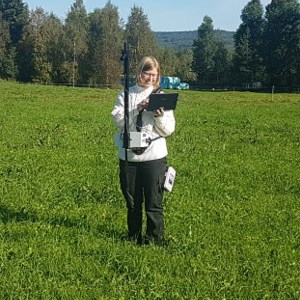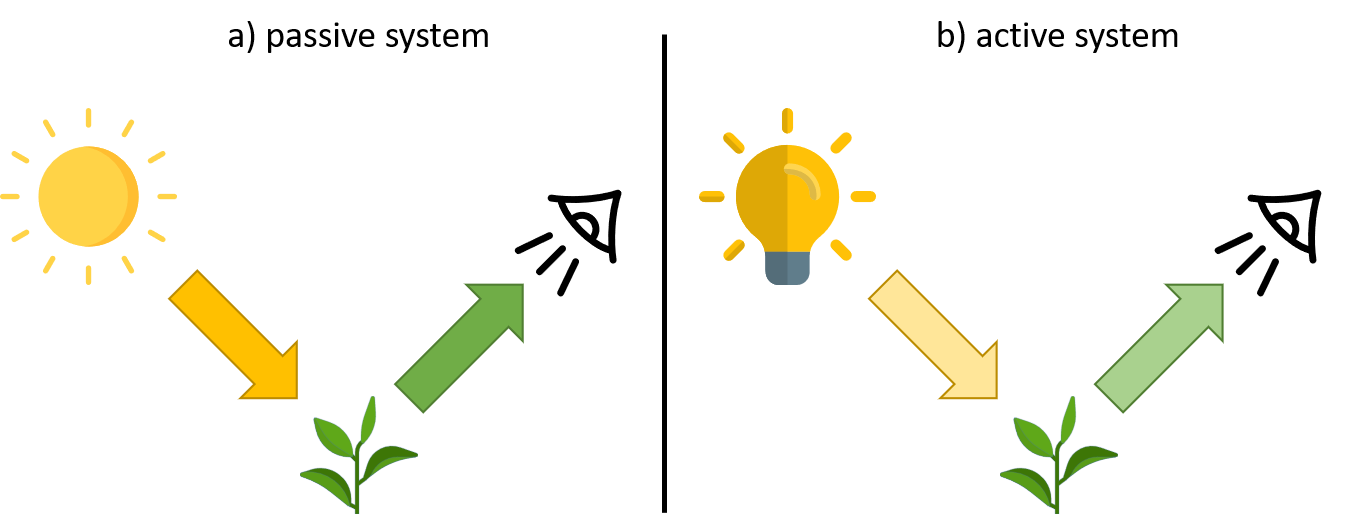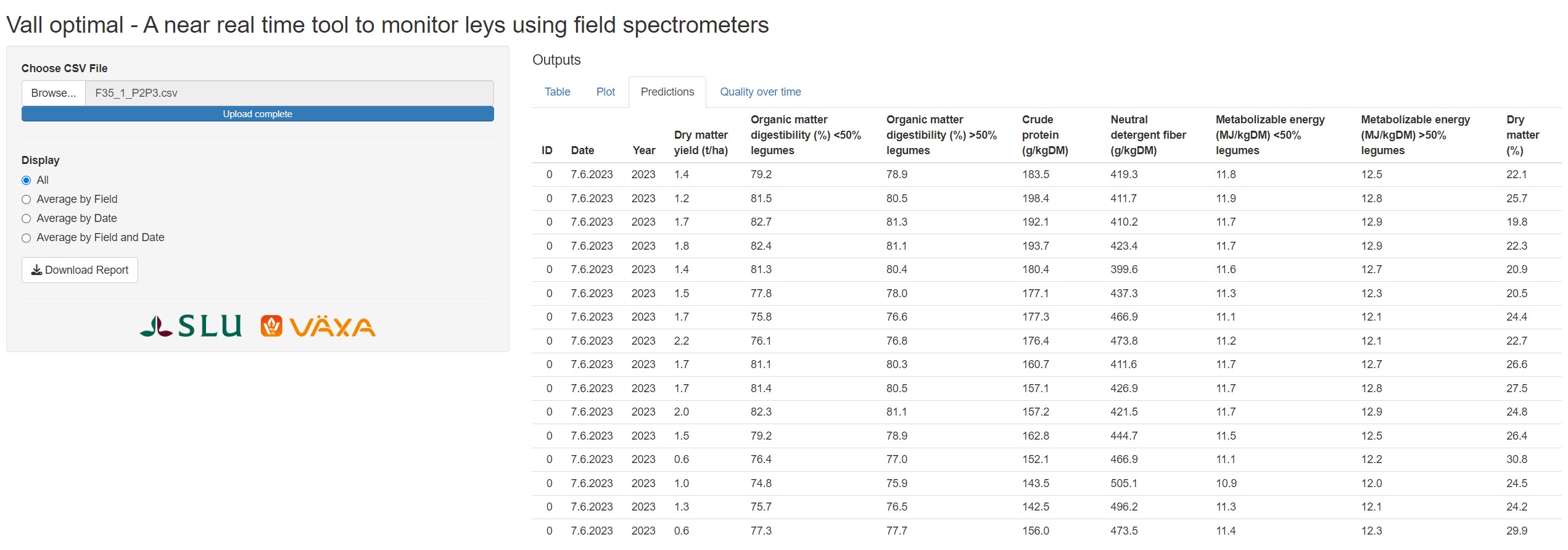Contact
Julianne Oliveira, Researcher
Department of Crop Production Ecology, Crop production science
Swedish University of Agricultural Sciences
julianne.oliveira@slu.se, +46 907868724, +46 767637129

This project aims to use field spectrometer and proximal sensors to assess forage quality pre- and post-harvest as ready-to-use alternatives for forage management in Sweden.
Analysing the nutrient composition in ley crops and other roughages became common in Sweden during the 1970s. The main aim in that period was to increase the crude protein concentration in hay and silage. In an effort to predict the nutritional quality of the forage before harvest, samples were taken and the results were linked to the accumulation of temperature, which is presented in a model to predict the optimal day for harvest of the first cut in ley systems. This model, Vallprognos (Vallprognos.se) provides robust and useful results and is currently in use in Sweden. However, we still lack information for predicting optimal harvest dates for the subsequent cuts. Farmers and advisors need near real time information on the nutritional quality status of the crop.
An alternative to the current methods is to use spectral devices that measure the amount of light reflected by plants. These measurements are combined with data from multiple analysed plant samples in laboratories using conventional chemistry for nutritive values, and these results are used for calibrations of the instruments. Used with appropriate mathematical tools, these devices provide information about the standing or harvested crop. These devices can further be divided into two types, the passive spectrometers, and active light spectrometers (Figure 1).

Figure 1. Passive (a) vs active (b) light sensors. The passive sensor measures the sunlight reflected by the plant, whereas the active sensor emits its own light using a bulb and measures it back after being reflected by the plant.
The project started in 2021 and until December 2023, covering three growing seasons. Field campaigns are being performed in several farms over Sweden and the tasks are organised according to three main activities, as follow:
Activity 1. Prediction of harvest time for ley using field spectrometers
Update current calibrations developed for leys in the north of Sweden using the Yara N-Sensor field spectrometer to predict harvest time. The Yara-N sensor is a commercial field spectrometer that is already used by farmers for wheat nitrogen management purposes. Predictions will be made for several parameters in the growing crop including yield, protein, and digestibility which gives the fraction of the feed that is utilised by the animal.
Activity 2. Field test the pre-harvest field spectrometer system with farmers
Test how farmers can use field spectrometer data to improve harvesting decisions and give advisors the opportunity to use field spectrometers as a complementary tool to the Vallprognos.se system. This activity generated a prototype of such a web system developed for farmers. The characteristics of the prototype website are depicted in Figure 2. If developed models show satisfactory accuracy and robustness, the YNS could be used on a regular basis by advisors as part of the Vallprognos.se program.

Figure 2. Prototype of the web system with the information that could be accessed by farmers.
Activity 3. Evaluate the potential for using active light sensors for prediction of nutrient content in grass/clover silage.
Handheld active light sensors can be an alternative to promptly analyze stored or freshly harvested forage, reducing the need to send samples to a laboratory, and enabling quick decision making.
For this activity, we are using two handheld devices to scan silage samples collected over several regions in Sweden. The resulting spectral data will be used together with laboratory analysis to develop mathematical models to predict feed quality.
This project is a collaboration between the Swedish University of Agricultural Sciences (SLU) and Växa Sverige.
Anders H Gustafsson, Expert fodder Knowledge & Development
Växa Sverige
anders.h.gustafsson@vxa.se, +46 10-471 06 32, +46 70-375 99 41
Hans Lindberg, Production Consultant
Växa Sverige
hans.lindberg@vxa.se, +46 10-471 01 15, +46 70-370 29 86
Johanna Karlsson, Expert fodder Knowledge & Development
Växa Sverige
johanna.karlsson@vxa.se, +46 10-471 01 35, +46 76-125 03 79
Julianne Oliveira, Researcher
Department of Crop Production Ecology, Crop production science
Swedish University of Agricultural Sciences
julianne.oliveira@slu.se, +46 907868724, +46 767637129
Sanna Bergqvist, Doctoral Student (leave of absence)
Department of Crop Production Ecology, Crop production science
Swedish University of Agricultural Sciences
sanna.bergqvist@slu.se, +46 907868726, +46 730675037
Bengt-Ove Rustas, Researcher
Department of Animal Nutrition and Management; Feed science
Swedish University of Agricultural Sciences
bengt-ove.rustas@slu.se, +46 18671663, +46 722446955
David Parsons, Professor
Department of Crop Production Ecology, Crop production science
Swedish University of Agricultural Sciences
david.parsons@slu.se, +46 907868714, +46 730893445
Julianne Oliveira, Researcher
Department of Crop Production Ecology, Crop production science
Swedish University of Agricultural Sciences
julianne.oliveira@slu.se, +46 907868724, +46 767637129